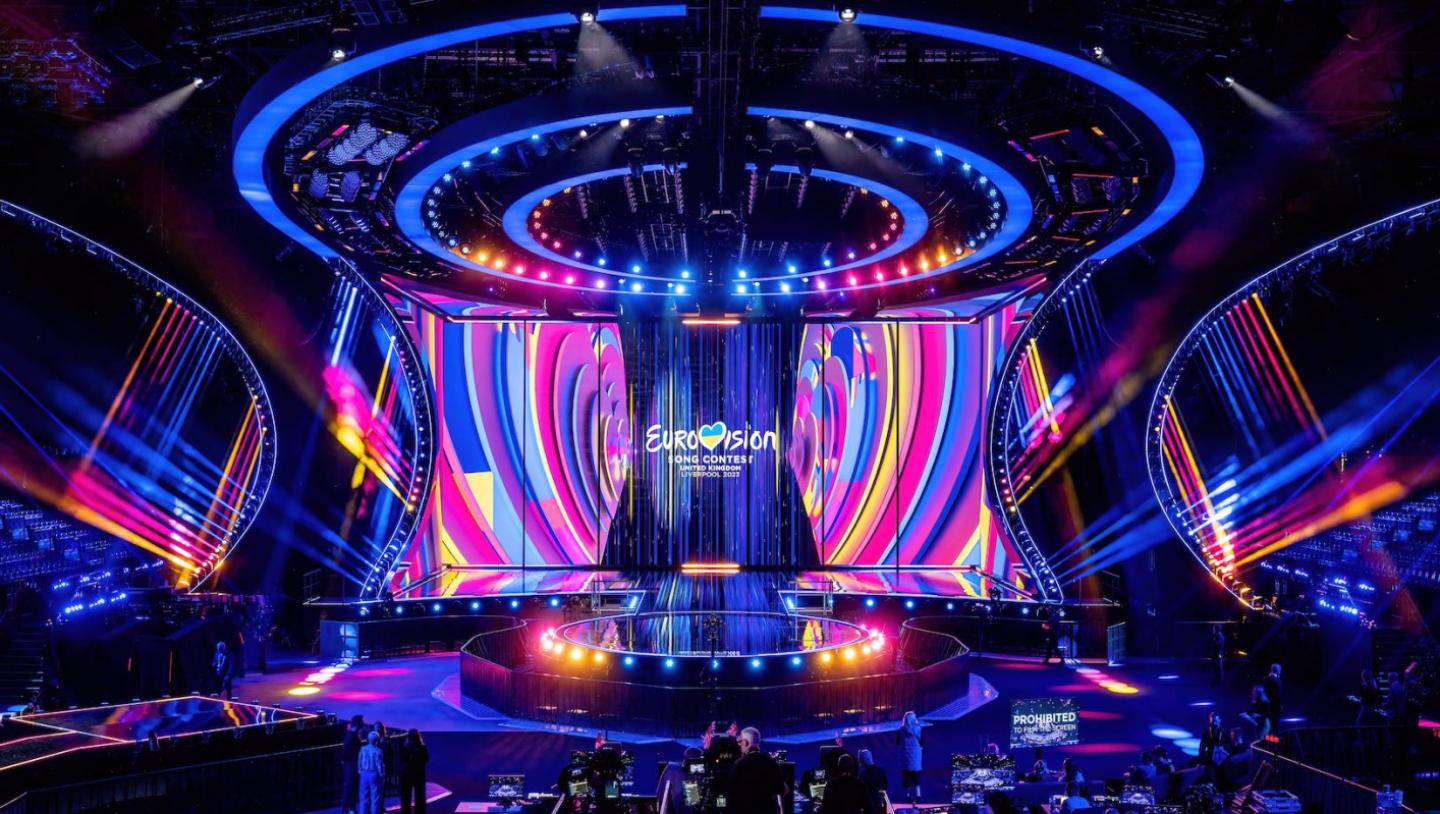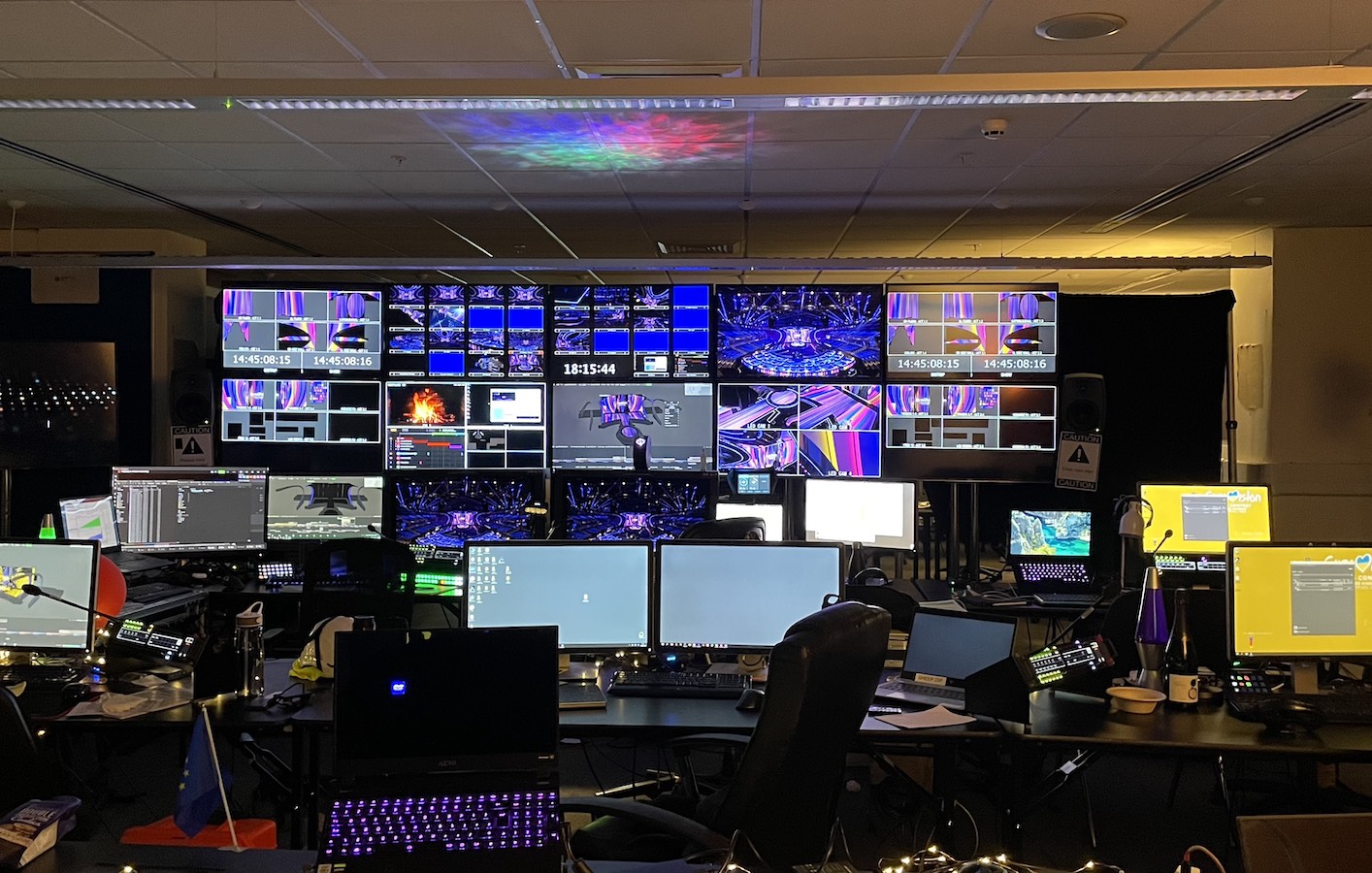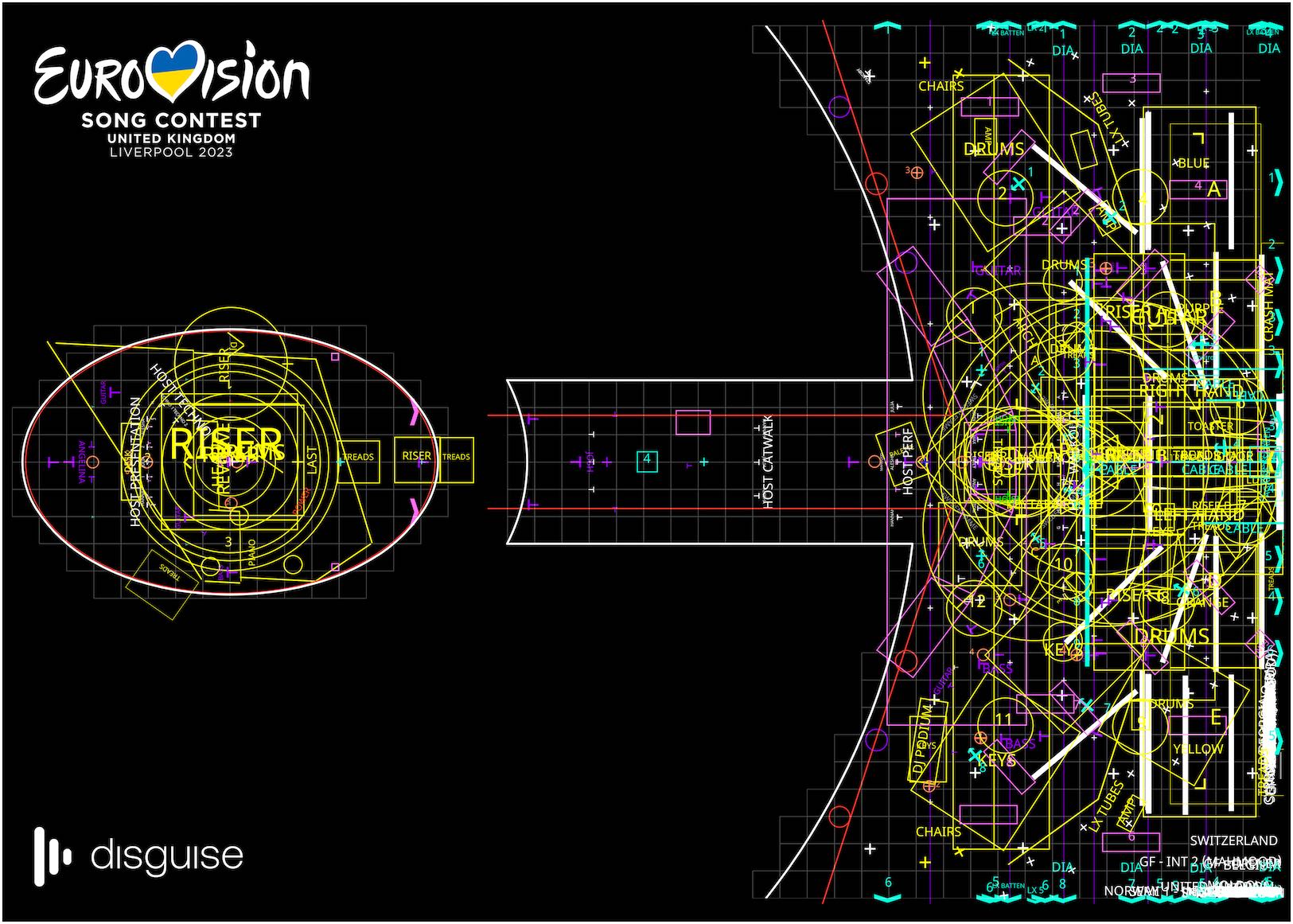Disguise powers complex stage management for the 2023 Eurovision Song Contest
Live Events
Music
Software
Workflows
Hardware

More than 160 million people worldwide tuned in to watch the 67th edition of the Eurovision Song Contest (ESC) this year. The live televised broadcast from Liverpool Arena brought together some of the most talented video programmers in the country, with the stage powered by banks of Disguise video playback hardware and stage management software for the event.
The Eurovision Song Contest was hosted in the United Kingdom on behalf of 2022 winner Ukraine. A spectacular stage with LED displays, light, sound and FX gave the ultimate in live experience.
Building on its first official partnership with the ESC in Tel Aviv, 2019, this year saw Disguise drive the ESC stage, featuring LED screens on the wall, floor, sides and ceiling, with added projection for a few of the delegation specials. Each display screen was capable of delivering a range of graphics and video and all were managed and controlled on six industry-leading Disguise VX 4 (director) and four GX 3 (editor) media servers, supplied by QED Productions.
Peter Kirkup, Solutions Director at Disguise, explains, “The Eurovision Song Contest is among the most complex and challenging productions in the world and demands the most powerful equipment to deliver the highest quality of performance. The complexity of catering for more than 37 different acts and several interval acts all with bespoke video content arranged in a multitude of configurations, means this is one of the biggest live events Disguise is used for.”
A team of five programmers, one stage projectionist and two system engineers were responsible for delivering the entire experience, all led by Head of Video, Chris Saunders at Ogle Hog. With Saunders handpicking Disguise for the project, they made extensive use of the editing workflow within Disguise workstations to design, layer and process the video content for each act. Disguise’s Designer software also allowed them to quickly switch between different asset iterations with the help of its content versioning feature, as artists were working on finessing their content during rehearsals.

The turnaround time between acts was just 50 seconds. With such a tight schedule, Saunders worked with Disguise to come up with a solution that would illuminate the precise marking on the LED stage for every change of set, instrumentation and artist, removing the need for tape marks on the floor. The graphical annotations, which were rendered within Disguise hardware and controlled wirelessly via an iPad, were created in the venue by the stage management team based on plans submitted by the delegations. Disguise’s digital spikemark feature lit the stage with 1250 marks throughout the show.
Saunders said “With the help of QED, Disguise and the programming team, we created a truly bulletproof system and content workflow. Everything and everybody performed above and beyond expectations. The digital spikemark system worked flawlessly, and was (still is) the standout feature. It offered an incredibly powerful tool to the real heroes of the show: the floor management team.”
Although the virtual spikemark approach has been previously used for the 2019 MTV Video Music Awards, the team were able to use Disguise APIs to customise the feature for the unique needs for Eurovision.
Disguise’s Product Engineering and R&D teams worked closely with the Screens Production and Stage Management teams alongside the BBC for three months on development and four weeks on site, including 12 hours of rehearsals, to customise the digital spikemark feature for the show. This was built on the new Disguise web-based platform capabilities.

Kirkup explained, “The Disguise iPad app displays the location of all stage marks per artist with the ability to scale, zoom and control them on-the-fly as creative and production needs dictate. Manipulation of stage cues happens independent of and in parallel to the video creative team. It was absolutely critical that the solution did not interfere with the main production crew and enabled flexible, fast and fluent scene transitions to drive the show.”
Saunders added, “I can honestly say that all my stars aligned to create the ultimate system and team for what was one of the largest shows I’ve worked on, and perhaps exists in this TV genre today. At all times it felt like a real collaboration of everybody involved. We only had one goal, to create the best show we could.”